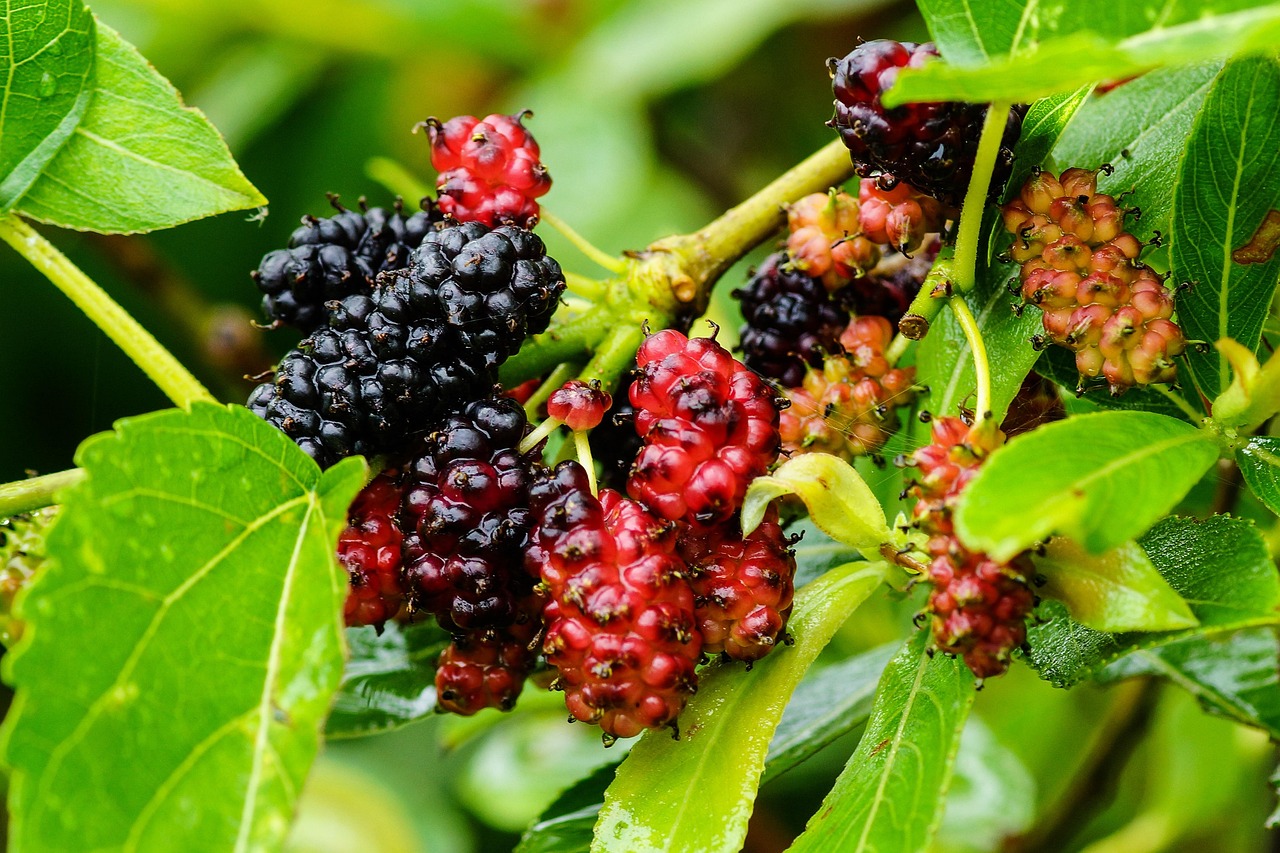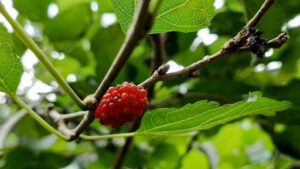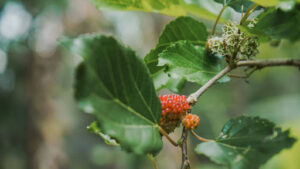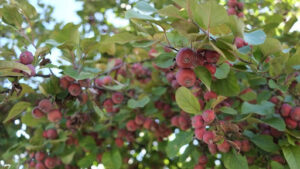Best Mulberry Tree Varieties for Fruit and Garden Growth

- September 25, 2025
- By Jason Sinclair
I’ve been looking into mulberry trees lately, and let me tell you, they’re quite the fascinating addition to a garden. They grow fast, don’t need a lot of fuss, and the fruit is something you just can’t find in the store. Plus, there’s a mulberry tree variety out there for almost any situation, whether you have a huge yard or just a small balcony. It’s about picking the right one for what you want.
What Makes the Best Mulberry Tree Varieties for Fruit and Garden Growth
When I first started thinking about growing mulberries, I wasn’t sure what to look for. Not all mulberry trees are created equal, and picking the right one for your garden makes a big difference. You want a tree that gives you plenty of tasty fruit without becoming a nuisance.
The best mulberry varieties for fruit and garden growth are typically those that are grafted or grown from cuttings, rather than from seed. This is because trees grown from seed can take many years to produce fruit, and you have no guarantee of the fruit’s quality. Plus, some mulberries are dioecious, meaning you need both a male and a female tree to get fruit, which is a gamble if you’re starting from seed. Grafted or cutting-grown trees come from mature parent plants, so they start fruiting much sooner, often within a couple of years.
Here are some key things I learned to consider:
- Fruit Quality: Some varieties are known for being exceptionally sweet, while others offer a more balanced flavor with a bit of tartness. If you’re aiming for fresh eating, sweetness is usually the goal. For jams or pies, a bit of tartness can be nice.
- Growth Habit: Mulberries can get quite large, but there are also dwarf and weeping varieties that are perfect for smaller gardens or even containers. Consider the available space and how you envision the tree fitting into your landscape.
- Hardiness: Different mulberry species and varieties have different tolerances for cold and heat. It’s important to choose one that will thrive in your specific climate zone.
- Disease Resistance: While mulberries are generally hardy, some varieties are more prone to certain diseases or pests than others. Looking for resistant varieties can save you a lot of trouble down the line.
- Fruiting Season: Some trees produce fruit over a long period, while others have a more concentrated harvest. If you want a steady supply of mulberries, a longer fruiting season is desirable.
It’s easy to get caught up in the idea of growing something from a seed, but with fruit trees like mulberries, starting with a known, established variety is usually the most rewarding path. You skip the long wait and the uncertainty, getting straight to the good part: the fruit.
When selecting a variety, I always check if it’s known for being particularly vigorous or if it tends to stay more manageable. Some people love the idea of a large, sprawling tree, but for most home gardens, a tree with a more predictable size and shape is often preferred. And, of course, the color of the fruit can matter – if you’re worried about stains, white-fruited varieties might be a better choice, though even they can sometimes stain a bit.
Species of the Best Mulberry Tree Varieties

When I started looking into mulberry trees, I quickly realized there are a few main types that most gardeners talk about. It’s good to know these because they have different characteristics, especially when it comes to the fruit they produce and how they grow.
First up is Morus alba, often called the White Mulberry. This one is originally from Asia and is known for being pretty adaptable. The fruit can vary a lot, but it’s often white or light pink and can be quite sweet. It’s also a fast grower, which is a plus if you want shade or fruit relatively quickly.
Then there’s Morus nigra, the Black Mulberry. This species is native to southwestern Asia and is famous for its really flavorful, dark purple to black fruit. People often say the taste is superior, with a good balance of sweetness and tartness. These trees tend to grow a bit slower and can be more particular about where they grow best, often preferring warmer climates.
Morus rubra, the Red Mulberry, is native to eastern North America. Its fruit is typically dark red to black and has a good, sweet flavor, though some find it not quite as intense as the black mulberry. These trees are also generally fast growers and can make lovely shade trees.
Beyond these main species, you’ll also find many hybrids. These are often crosses between the different species, created to combine desirable traits. For example, a hybrid might aim for the superior fruit flavor of Morus nigra with the hardiness or faster growth of Morus alba or Morus rubra. ‘Illinois Everbearing’ is a popular example of a hybrid that’s known for its large, sweet fruit and good adaptability.
Here’s a quick look at some general differences:
| Species | Native Region | Fruit Color | Typical Fruit Flavor | Growth Rate | Hardiness (General) |
| Morus alba | Eastern Asia | White, Pink, Purple | Sweet, Mild | Fast | Good |
| Morus nigra | Southwestern Asia | Dark Purple/Black | Rich, Tart-Sweet | Moderate | Moderate |
| Morus rubra | Eastern North America | Dark Red to Black | Sweet, Mild-Tart | Fast | Good |
It’s worth noting that while Morus alba is often called the White Mulberry, some cultivars of it can produce dark fruit. The species name refers more to the original fruit color of the wild type. When choosing a tree, looking at the specific cultivar is important because the characteristics can vary quite a bit even within the same species.
Top Best Mulberry Tree Varieties for Large, Sweet Fruit
When I’m looking for a mulberry tree that’s going to give me a good amount of large, sweet fruit, I tend to focus on a few specific types. It’s not just about the size, though; the sweetness is really what makes them stand out for fresh eating. I’ve found that some varieties are just naturally more productive and have a better flavor profile than others.
For me, the ‘Illinois Everbearing’ is often at the top of the list. It’s known for producing large, dark fruit that is incredibly sweet, and it has a pretty long fruiting season, which means more berries for me over a longer period. Another one I’ve had good luck with is the ‘Pakistan’ mulberry. These trees produce exceptionally long, dark purple fruit that are intensely sweet and have a wonderful texture. They’re not as widely available as some others, but if you can find one, it’s usually worth the effort.
Here’s a quick look at some of the best mulberry tree variety options for sweet, large fruit:
- Illinois Everbearing: Large, dark fruit, long fruiting season, very sweet.
- Pakistan: Very long, dark fruit, intensely sweet, unique flavor.
- Wellington: Produces medium to large, sweet, dark red fruit.
- Shangri-La: Known for large, sweet, dark red fruit and vigorous growth.
I’ve noticed that the trees grafted from mature stock tend to produce fruit much sooner than those grown from seed. If you’re eager to get your hands on some delicious mulberries, starting with a grafted tree is definitely the way to go. It skips that long waiting period and gets you to the good stuff faster.
It’s important to remember that while many of these varieties are praised for their sweetness, personal taste can vary. Some people prefer a bit of tartness, while others, like myself, lean towards the purely sweet varieties. The best mulberry tree variety for you will ultimately depend on your specific taste preferences and what you plan to do with the fruit.
Best Mulberry Tree Varieties Suited for Small Gardens and Containers

When I first started thinking about growing fruit trees, I figured my small yard meant I was out of luck. But then I discovered that not all fruit trees are giants! Mulberry trees, surprisingly, can be quite adaptable. For those of us with limited space, like a small backyard or even just a patio, there are specific mulberry varieties that really shine.
Many standard mulberry trees can get pretty big, sprawling out and taking over. That’s not ideal when you’re trying to fit things onto a balcony or into a tight urban garden. The good news is that breeders have developed or identified types that are much more manageable. These are often referred to as dwarf or weeping varieties. They offer that lovely mulberry fruit without demanding a huge footprint.
Here are a few things I’ve learned to look for:
- Dwarf Varieties: These are naturally smaller trees, often topping out around 6-10 feet. They’re great for planting in the ground in a small garden bed or even a large pot.
- Weeping Varieties: These have a more cascading growth habit, which can be really attractive and also helps keep their size in check. Some can reach about 10 feet tall but have a more contained spread.
- Container Suitability: Look for trees specifically mentioned as being good for containers. This usually means they have a more compact root system and a growth habit that tolerates being pruned to stay within bounds.
It’s important to remember that even dwarf varieties will need a decent-sized pot if you’re growing them in one. Something like a 15-20 gallon pot is a good starting point, and you might need to repot as the tree grows. I also found that regular pruning is key to keeping them happy and productive in a smaller space.
When selecting a mulberry for a small space, I always check the mature size. Some trees are labeled ‘dwarf’ but can still get surprisingly large over time. It’s better to be a bit conservative and choose a variety known for staying truly compact, especially if it’s going into a container where its root growth is naturally restricted.
Choosing the Best Mulberry Tree Variety for Your Region

When I’m picking out a mulberry tree, the first thing I really think about is where I live. It’s no good getting a tree that’s going to freeze solid in the winter or bake in the summer sun. Luckily, mulberries are tough, but some kinds are tougher than others.
Generally, the white mulberry (Morus alba) and its crosses with the red mulberry (Morus rubra) are the hardiest. I’ve seen them do well in areas as cold as USDA zone 4. If you’re in a warmer spot, say zone 6 or higher, you might have more luck with the black mulberry (Morus nigra), which is known for its really tasty fruit, but it just doesn’t handle the cold as well.
Here’s a quick rundown of what I consider for different climates:
- Cold Climates (Zone 4-5): Stick with white mulberries or hybrids. They’re your best bet for surviving those harsh winters.
- Moderate Climates (Zone 6-7): You have more options. White, red, and hybrids should all do well. Black mulberries might also start to work here, especially if you can give them a sheltered spot.
- Warm Climates (Zone 8+): Most mulberry types will thrive. Black mulberries are often best here for fruit quality, but even the white and red varieties will produce abundantly.
It’s also worth noting that while many mulberries are quite adaptable, they do prefer full sun and decent soil. However, I’ve seen them grow in some pretty rough spots, even in pavement cracks, so they’re not overly fussy. Just try to avoid areas where water sits for too long.
Picking the right variety for your climate means the difference between a struggling tree and one that fruits reliably year after year. It’s about giving the tree the best chance to show you what it can do.
What to Look for in the Best Mulberry Tree Variety
When I’m picking out a mulberry tree, I really focus on a few key things that make life easier and the harvest better. First up, disease resistance is a big one. While mulberries are generally tough trees, some varieties are just naturally more prone to issues like fungal infections or bacterial blight. I try to stick with varieties known for their vigor and natural resilience. It saves a lot of headaches down the road.
As for growth habit, this is where personal preference and garden space really come into play. Some mulberries grow into large, spreading trees, which are great if you have the room and want a significant shade provider. Others are naturally more compact or even dwarf, making them perfect for smaller yards or even container growing. I’ve also seen weeping varieties that add a unique aesthetic. It’s important to match the tree’s mature size and shape to your available space. Remember, a tree that’s too big for its spot will require more pruning and can become a maintenance burden.
Maintenance is usually straightforward with mulberries, which is a big plus in my book. They’re not overly fussy about soil, though they do prefer well-drained spots. They’re also quite forgiving of less-than-ideal conditions. However, if you want the best fruit for yourself, rather than for the birds, I find a bit of annual pruning really helps.
- Formative Pruning: When the tree is young, I like to establish a strong, spreading structure. This often involves cutting back the main leader to encourage side branches at a manageable height. My goal is to create a scaffold that allows easy access to the fruit without needing a ladder.
- Annual Pruning: Once the structure is set, I’ll prune back those main branches each year. This keeps the tree size in check and encourages new fruiting wood.
- Root Teasing: If I’m planting a container-grown tree, I always check the roots. If they’re circling, I gently tease them apart to encourage outward growth into the new soil.
I’ve noticed that mulberries are incredibly adaptable. I’ve seen them thriving in tough spots, even growing between pavement cracks. This resilience means they don’t demand prime garden real estate, freeing up those choice locations for plants that might be a bit more particular. Just be mindful of where you plant it, considering the potential for fruit stains on pathways or patios.
Ultimately, choosing a variety with a manageable growth habit and understanding basic pruning techniques will make your mulberry experience much more rewarding.
Recommended Best Mulberry Tree Varieties by Use
When I think about using mulberries, my mind immediately goes to the sheer joy of eating them fresh. For that, I really look for varieties that offer a good balance of sweetness and a bit of tang. The ‘Illinois Everbearing’ is a standout here, known for its long fruiting season and delicious flavor. It’s a hybrid, often a cross between Morus alba and Morus rubra, and it seems to hit that sweet spot for many people.
If you’re planning on making jams, preserves, or even wine, you might want a slightly different profile. Some of the darker-fruited varieties, often associated with Morus nigra or certain Morus alba cultivars, can provide a richer, deeper flavor that holds up well in cooking. While Morus nigra isn’t the hardiest for colder climates, its fruit quality is often praised.
For attracting wildlife, especially birds, any fruiting mulberry will do the trick. However, if you want to manage the bird population or simply prefer a tidier yard, choosing a white-fruited variety might be a good idea. Just remember, the name ‘white mulberry’ doesn’t always mean white fruit; it’s more about the species.
As for shade, while mulberries can grow quite large, I wouldn’t typically recommend them as a primary shade tree if you’re looking for a very formal or manicured look. They can get a bit messy with fallen fruit. However, if you’re aiming for a more naturalistic or food-forest style garden, a larger, unpruned mulberry can certainly provide a nice canopy. I’ve seen some people train them into espaliers, which is a neat way to get fruit without a massive tree.
Here’s a quick look at some general characteristics:
- Fresh Eating: Look for sweet, well-balanced flavor. ‘Illinois Everbearing’ is a top pick.
- Jams & Preserves: Darker, richer flavors are often preferred. Consider varieties known for good cooking qualities.
- Wildlife: Most fruiting varieties attract birds. White-fruited types might be less messy.
- Shade: Can provide shade, but consider fruit drop. Espaliering or pruning can manage size.
It’s important to remember that mulberries grow quickly and are quite hardy. They can tolerate a range of conditions, which makes them a forgiving choice for many gardeners. Just be mindful of where you plant them, especially if you have light-colored surfaces nearby.
When starting, I always suggest getting a grafted or cutting-grown tree. This way, you know exactly what you’re getting in terms of fruit quality, and you can often get fruit much sooner than from a seed-grown tree. It really takes the guesswork out of it. You can find some excellent options at specialty nurseries that focus on fruit trees.
Where to Buy & Propagate the Best Mulberry Tree Variety for Your Garden
Finding the right mulberry tree for your garden is the first step, and then figuring out how to get it growing. When I’m looking for a new tree, I usually start with specialist nurseries. These places often have a better selection of named varieties, which is important because, unlike apples, mulberry seeds don’t reliably produce fruit like the parent tree. If you want predictable, good-tasting fruit, it’s best to go with a tree that’s been propagated vegetatively – either by cuttings or grafting.
Propagating mulberries yourself can be a rewarding project. Cuttings are a common method, but they can be a bit tricky for beginners without the right setup. You’ll often need bottom heat, rooting hormone, and a way to keep humidity high. Grafting is another option, and some gardeners find cleft grafting to be quite successful. It’s a good way to ensure you get the exact variety you want.
If you’re starting from scratch with a young, unbranched tree, often called a whip, you can shape its future growth. I like to prune the leader off the whip early on. This encourages side branches to form lower down, making it easier to reach the fruit later without a ladder. Aim for a short, wide shape – think umbrella.
When you’re buying a container-grown tree, take a look at the roots. Mulberry roots grow fast, and it’s common to see them circling the pot. Gently tease these roots apart before planting so they can spread out into the new soil. This helps the tree establish itself properly.
Here are a few things to consider when sourcing your tree:
- Specialty Nurseries: Look for nurseries that focus on fruit trees or nut trees. They often carry a wider range of mulberry varieties.
- Online Retailers: Many reputable online nurseries ship bare-root or container-grown trees. Always check reviews and their shipping policies.
- Local Garden Centers: While selection might be more limited, you might get lucky and find a good specimen locally.
Growing mulberries from seed is possible, but it’s a bit of a gamble. You won’t know the fruit quality until it matures, which can take several years. Plus, some mulberries are dioecious, meaning you need both a male and a female plant for fruit production. For reliable fruit, stick to grafted or cutting-grown trees.
Remember, mulberries are tough trees. Once they’re established, they don’t need a lot of fuss. Just pick a well-drained spot, give them plenty of sun, and you’ll likely be rewarded with plenty of fruit.
Frequently Asked Questions
How quickly do mulberry trees grow?
I’ve noticed that mulberry trees grow quite fast. They are known for their rapid growth, making them a great choice if you want fruit relatively soon.
Can I grow a mulberry tree from a cutting?
Yes, I can confirm that growing mulberry trees from cuttings is indeed possible. It’s a common way to start new trees.
Do mulberries grow on trees or bushes?
Typically, mulberries grow on trees, but I’ve learned that you can shape them to grow more like a bush by pruning them in a certain way to encourage more branches.
Can I grow a mulberry tree in a pot?
Yes, you can grow a mulberry tree in a pot. This is especially helpful for those in colder climates who might need to move the tree to a sheltered spot during winter.
How do I start a mulberry tree from seed?
While it’s easy to grow mulberries from seed, I don’t recommend it if you want good fruit quickly. Seed-grown trees can take 5-10 years to produce fruit, and you won’t know the quality of the fruit until then. Plus, some mulberry trees need both a male and a female plant to produce fruit, which you won’t know until they mature.
What’s the best way to prune a mulberry tree for fruit?
If you want to harvest the fruit yourself, I suggest pruning your mulberry tree quite a bit each year. My goal is to create a strong branch structure that I can then cut back annually. This encourages new growth where the fruit will appear.
